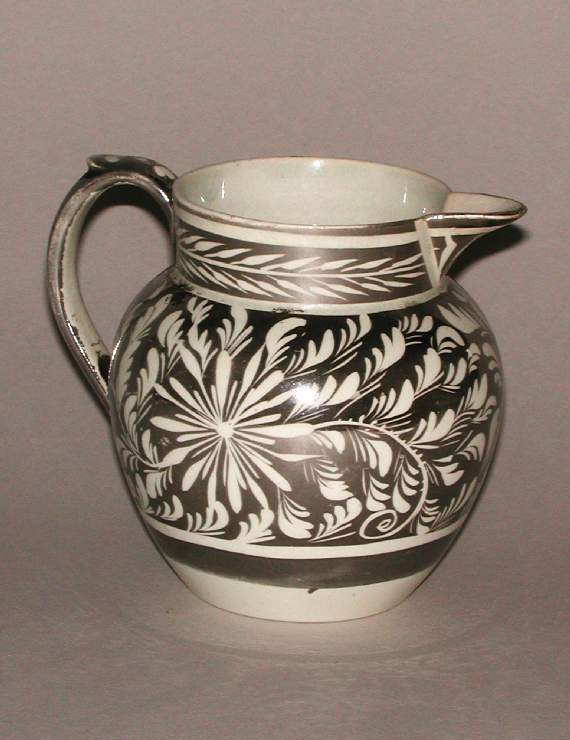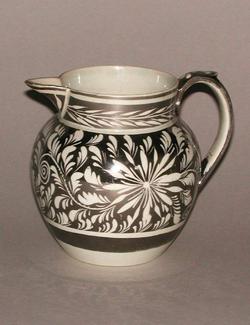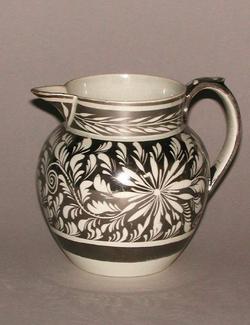Current Location: In storage
Titles
Small silver resist jug
Maker(s)
Production:
unidentified English pottery
(Probably)
Entities
Categories
Description
White earthenware, glazed, hand-decorated and resist-lustred.
Jug with bulbous body, slightly flared cylindrical neck, curved lip and loop handle. The neck, outside handle and top two thirds of the body covered with silver resist lustre decoration of stylised leaves and flowers, with thin white bands around the rim, top and bottom of the neck and shoulder and a wide lustre band above the foot. The underside is flat and glazed, with a raised foot-rim and an impressed circle at the centre.
Notes
History note: Mrs H. C. Corsellis
Legal notes
Given by Mrs H.C. Corsellis in memory of her late husband Douglas Henry Corsellis, Trinity College, Oxford
Measurements and weight
Height: 10.2 cm
Width: 12 cm
Acquisition and important dates
Method of acquisition: Given
by
Corsellis, H.C., Mrs
Dating
19th Century, Early
George III
Circa
1810
CE
-
Circa
1820
CE
Note
Resist lustreware was typically produced by drawing, transfer printing or stencilling the design over-glaze then applying a size (perhaps a sugar and glycerine mix) to the design, with a fine brush. The jug was then coated in lustre, which only adhered to the unpainted parts. Silver lustre, made using minute deposits of platinum on a white, yellow or blue ground, was popular from around 1810-1830; and pots were sometimes coated all over to mimic Georgian silver. Pink and purple lustre was also produced, using gold. Leeds and Staffordshire were the main centres of production for resist lustreware, however Leeds jugs more typically have an angular handle.
This type of jug was made for everyday use. The shape and size of this example suggest it is a milk jug.
Components of the work
Decoration
composed of
platinum lustre
Decoratuion
composed of
glaze
Materials used in production
Earthenware
Techniques used in production
Throwing
: White earthenware, glazed, decorated with a hand-drawn design and resist-lustred.
References and bibliographic entries
Identification numbers
Accession number: C.12-1974
Primary reference Number: 71598
Stable URI
Audit data
Created: Saturday 6 August 2011
Updated: Tuesday 30 April 2024
Last processed: Tuesday 13 May 2025
Associated departments & institutions
Owner or interested party:
The Fitzwilliam Museum
Associated department:
Applied Arts






